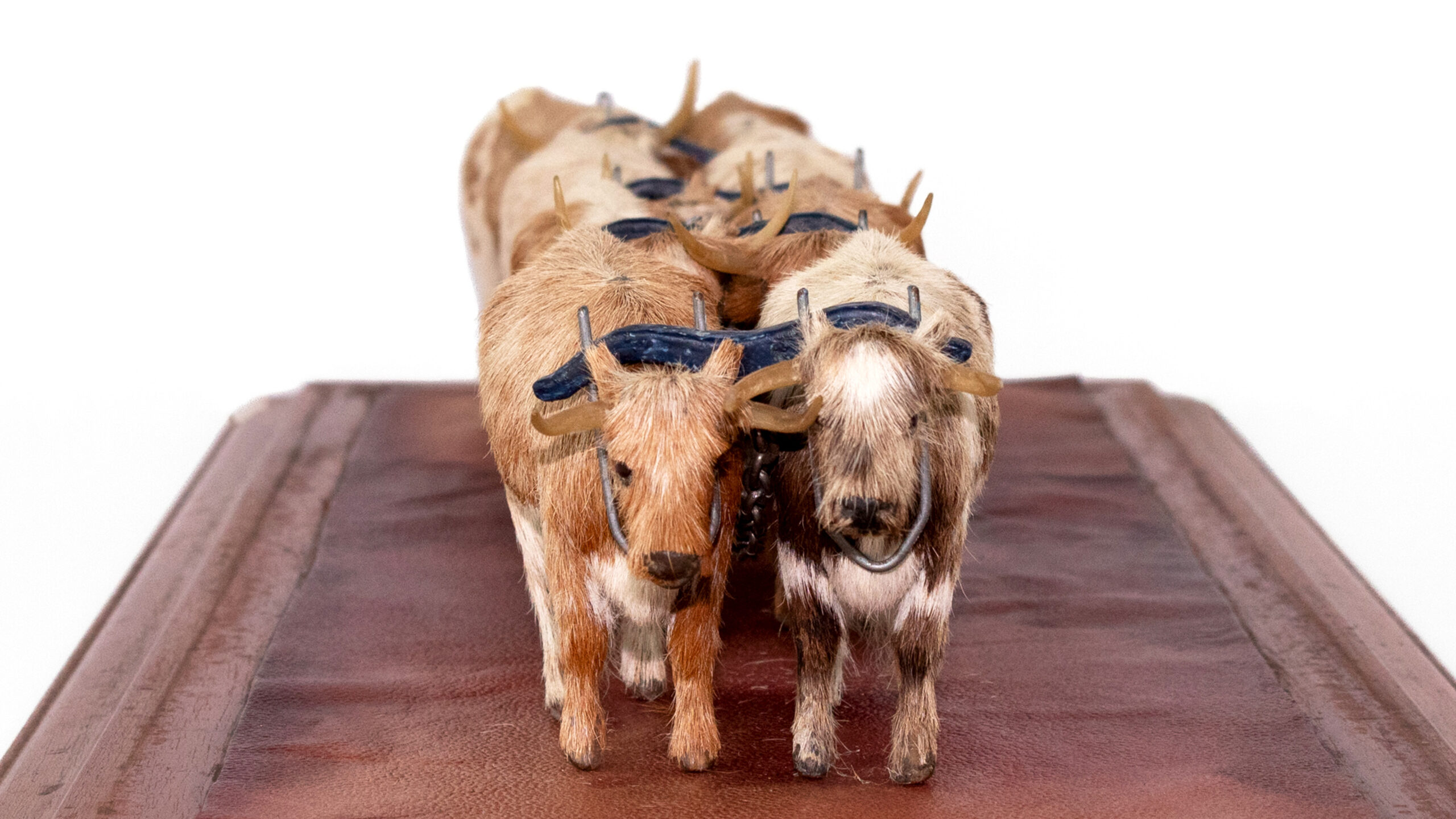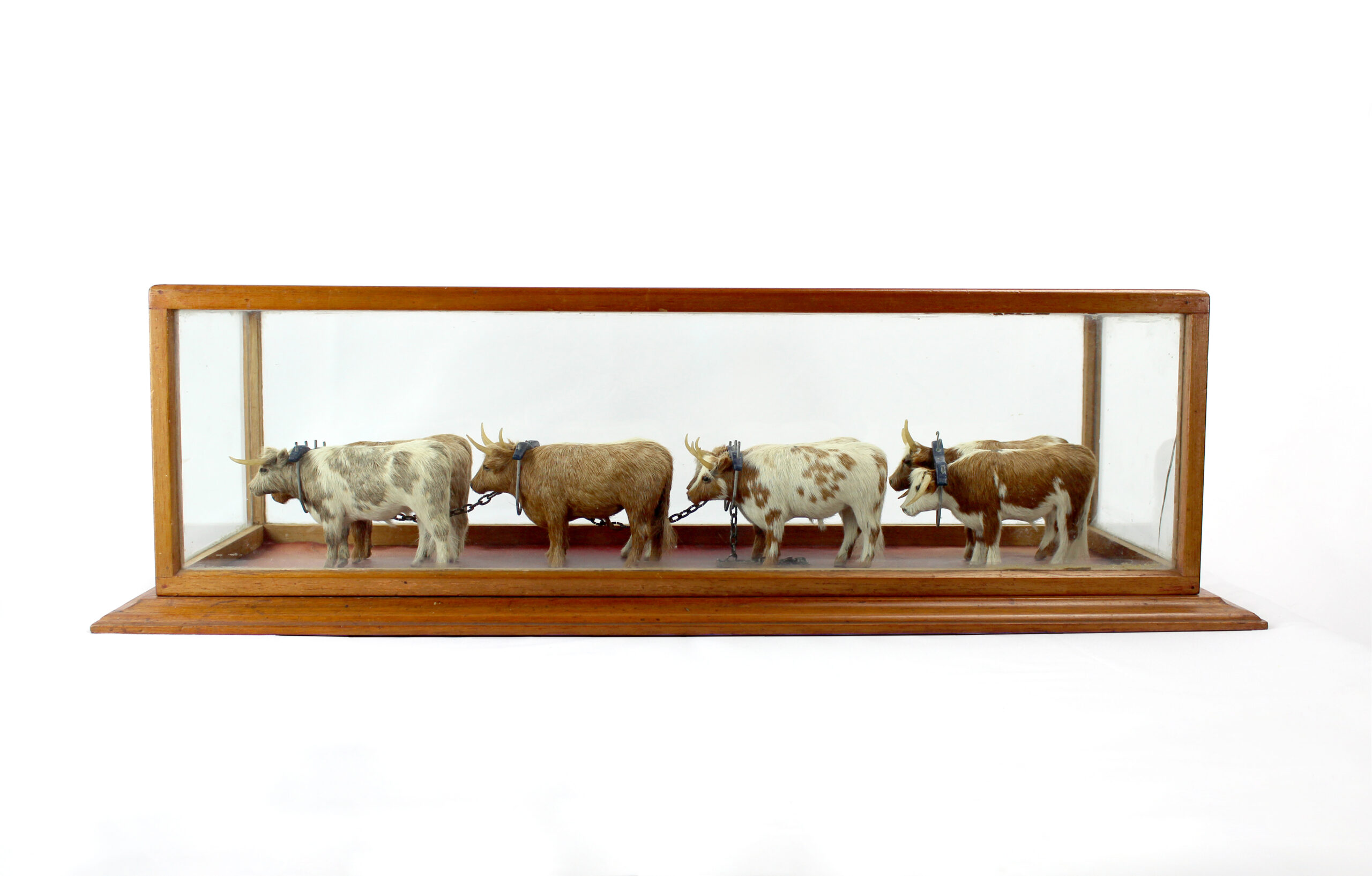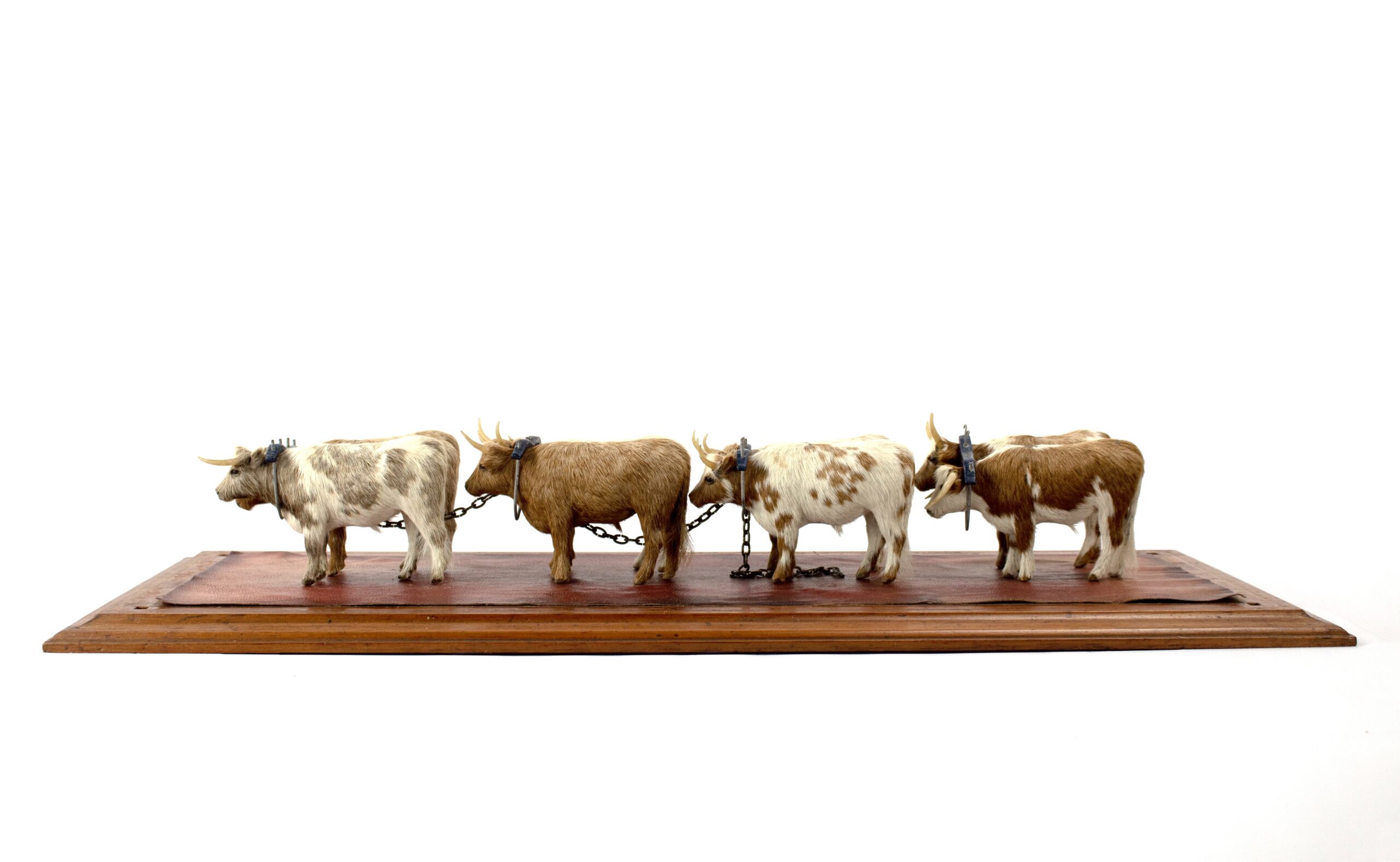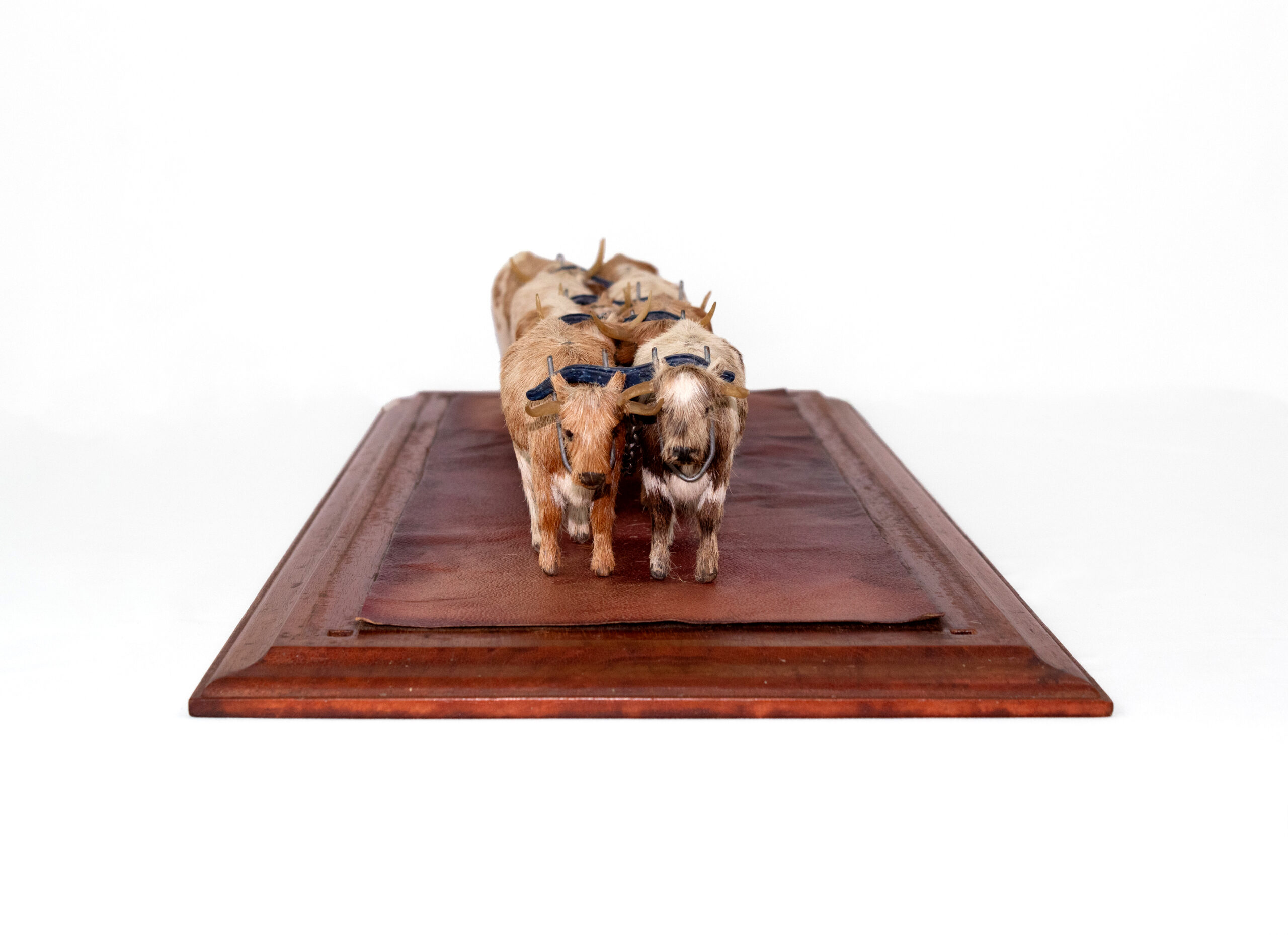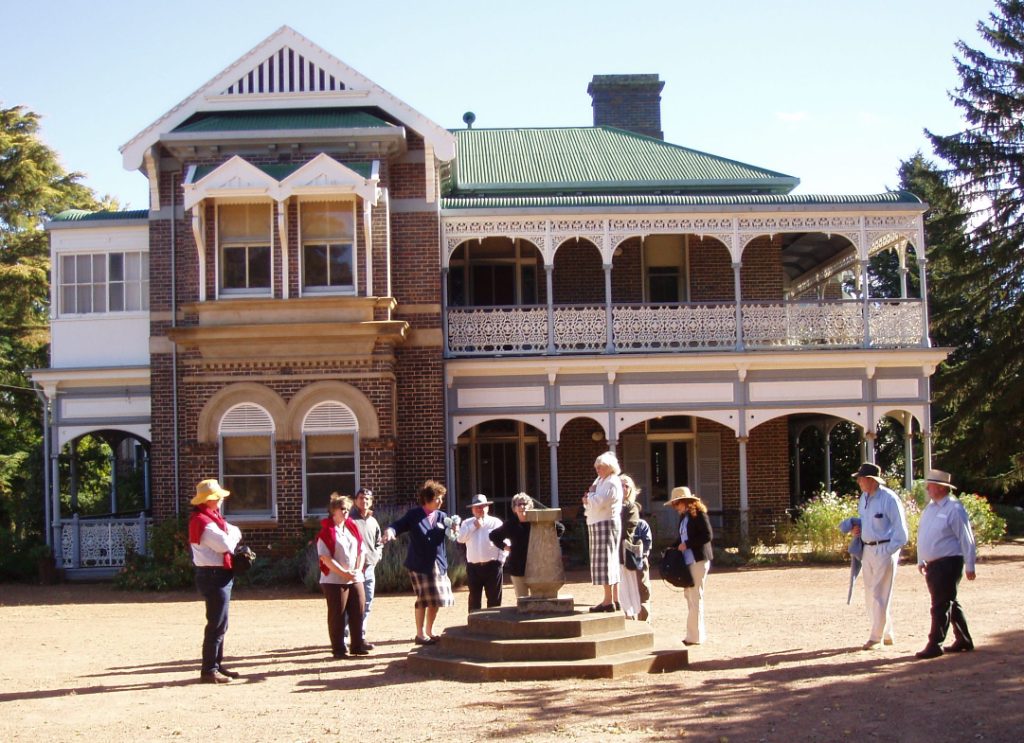Beeswax and Bullocks
The Delicate Craft of Wax Modelling
The Arts and Crafts movement, spanning from 1880 to 1920, saw many women broaden their creative repertoire from traditional home and sewing-based crafts to woodcarving, ceramics, and painting. As women became more visible, country shows offered a way to exhibit, be noted and awarded for their work. One unusual craft done by women, seemingly only found in the Armidale (NSW) area, was wax model making.
Three sisters, Mary, Martha, and Wilhelmina Gore who grew up nearby in Uralla, developed a beeswax technique to make miniature farm animals to a standard which won awards locally and overseas between 1879 and 1893. A particularly excellent example of Mary Gore’s (1858-1944) beeswax model work has been preserved in a wood and glass case in the drawing room at Saumarez Homestead, Armidale.
The model is of eight working bullocks, harnessed together with miniature yokes made of metal and wood. The bullocks are covered in real cow fur and each hair was implanted by hand, set into the bullock bodies with daubs of wax to build their coats from the legs up. One can only marvel at the hours it must have taken to achieve such finely detailed work.
The tiny hooves were carved out of sheep’s horn, the eyes are made of glass or seeds, and the horns are made of rooster talons. The meticulously crafted bullocks are faithful representations of Hereford and Roan Shorthair horned cattle, both originating from England.
As they did in Mary’s time, this team of bullocks, each a delicate assemblage of unexpected materials, continue to enchant their viewers as they tread their red leather base.


